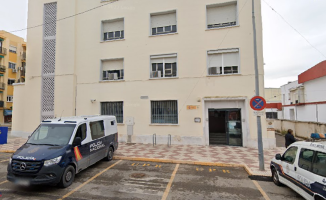We know much more about them than they themselves. Two priests, a married woman, an official, a Greco-Roman youth and a four-year-old boy. Six people who lived between the years 800 a. C. and 100 d. C. and that from this Thursday are exposed in the Caixaforum of Barcelona. Six mummies from the British Museum and offering a glimpse of life in ancient Egyptian Egypt. More like six: each of these six people has been analyzed in all aspects by the researchers of the great British museum and they arrive in Barcelona to reveal what life was like for priests, what life was like as a child, what life was like as a married woman... Well, they are not the lives of the common people, but of the elite or aristocracy that could afford a mummification, that pit stop before embarking on the path to the afterlife. "They mummified to continue living," explained Marie Vandenbeusch, curator of the exhibition and of the Department of Ancient Egypt and Sudan of the British institution, who has set up the exhibition hand in hand with Daniel Antoine, chief curator of the same department.
The sarcophagi are accompanied by around 260 objects that explain how people lived on the banks of the Nile between 20 and 25 centuries ago.
The exhibition places almost as much emphasis on history as it does on technology. Thanks to computerized tomography, for example, we have biographical data on each of the six mummies, we know their age, beliefs, illnesses, diet, approximate age, lifestyle... Some of these things they themselves were unaware of. 2,000 years have passed.
This technique makes it possible to analyze mummified remains with great precision without having to touch them, and thanks to this, many hitherto unknown details have been discovered. The characters are Ameniryirt, official; Nesperennub, priest; and Takhenemet, a married woman. All three lived in Thebes; there is also Penamunnebnesuttawy, a priest from the north of Egypt; an anonymous four-year-old boy from Hawara; and a young man also without a name from the Greco-Roman period who must have been about 17 or 18 years old when he died. Each of them is accompanied by objects that explain his life.
From the mummy of Nesperennub, for example, it was discovered through the scanner that it had a clay bowl, a snake, a pectoral, wax figures of the four sons of Horus and an incision plate, which was used to cover the incision cut in the abdomen through which the internal organs were removed. The accuracy of the scanner is such that the bowl is imprinted with the fingerprints of the craftsman who made it.
The objects have been reproduced one by one. On the other hand, it is known that the Penamunnebnesuttawy sarcophagus was made with up to 36 different pieces of wood, a rare commodity in that civilization, and therefore explains aspects of its economy.
Ameniryirt, for his part, had a set of teeth... it is known that he also suffered various cancers (he is one of the first humans to be diagnosed), one of them in the hip possibly originating from some soft tissue.
“They had some magical treatments and some similar to what we use today,” Vandenbeusch explains, pointing to the objects that accompany this mummy.
"This exhibition also raises an ethical debate, since we are exhibiting people who were exhumed from their graves," said the corporate director of Culture and Science of the Fundació, Ignasi Miró. For this reason, the first sign of the exhibition does not speak directly of Egypt: “Visitors are warned that this exhibition contains human remains. The study of human remains provides a unique insight into the lives of people from the past. The la caixa foundation is committed to treating human remains with care, respect and dignity”.
The fabulous exhibition is the seventh that the Fundació la Caixa co-organises with the British. It will be open until March 26, 2023, after having passed through Madrid and before landing in Valencia and Seville. The director of international commitment of the English museum, Nadja Race, appreciates that her institution has a deliberate desire "to be a British museum but for the world in a global sense."













